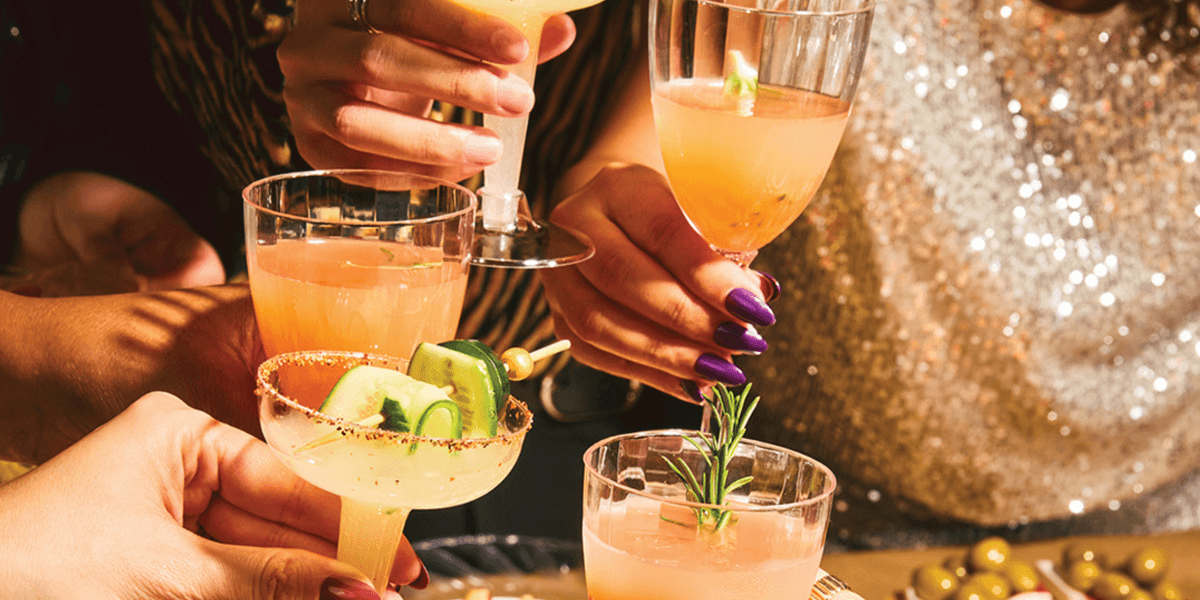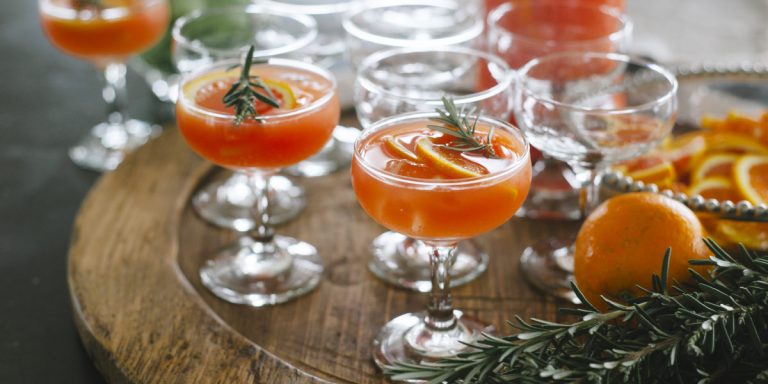Sweet, Sour, Strong: The Balance Formula

Every time I approach a cocktail, I think of it like balancing a scale. Too much sugar and the drink turns cloying, too much sour and it puckers the lips in discomfort, too much strength from the alcohol and it feels like a punch to the chest. The art, the real magic, lies in finding the equilibrium where each element supports the other. Sweet, sour, and strong the holy trinity that makes a drink feel alive and layered rather than flat or forgettable.
Why Balance Matters
When I sip a drink that nails the balance, it lingers in my memory far longer than something overdone. Balance is not about muting flavors or making them safe; it’s about ensuring no single note overwhelms the others. Think of it like music. A bassline by itself might be powerful, but pair it with the right melody and rhythm, and suddenly it becomes a song that sticks in your head. Cocktails follow the same principle. Without balance, even the most expensive spirits or exotic syrups fall flat.
The Role of Sweetness
Sweetness gives warmth and softness to cocktails. It cushions the intensity of alcohol and tempers the sharpness of acid. But it’s not just about sugar; sweetness has layers. A simple syrup offers one kind of sweet, while honey brings depth, maple syrup adds earthiness, and liqueurs contribute their own botanical or fruity complexity.
I often experiment with different sweeteners depending on the mood of the cocktail. A daiquiri with raw sugar syrup has a completely different character than one with white sugar syrup. The former has molasses notes that ground the lime and rum, while the latter feels lighter and cleaner. Sweetness is the foundation that gives the other ingredients something to lean on.
The Energy of Sour
Sourness is what keeps a drink alive. It cuts through sweetness and refreshes the palate, making you want another sip. Lime, lemon, grapefruit, tamarind each sour agent has its own personality. Lime is sharp and tropical, lemon is bright and zesty, grapefruit is bitter-sour, tamarind is tangy and almost savory.
I love how sour elements can shift the tone of a cocktail with just a small adjustment. Too little and the drink tastes heavy, too much and it becomes aggressive. But hit that sweet spot, and suddenly the drink sings. Sourness isn’t just flavor; it’s energy, a spark that makes the entire experience more dynamic.
The Backbone of Strength
The strong element, the spirit itself, is the anchor of the formula. It carries the drink’s personality. Rum might bring a sense of warmth and adventure, gin contributes botanical sharpness, whiskey adds depth and smoke, tequila offers earthy brightness. The trick is not to let the spirit dominate the conversation but to let it guide it.
A strong drink should remind you of what you’re drinking without shouting it in your face. I enjoy testing how far I can push the strength while still maintaining balance. Sometimes a drink benefits from a gentle hand, while other times it thrives on a bold pour. The secret is making sure the strong feels integrated with sweet and sour, not detached from them.
Classic Examples of the Balance Formula
The easiest way to see how sweet, sour, and strong interact is to look at classic cocktails.
The Daiquiri
Rum, lime, and sugar. Nothing else is needed. Each element is clear, and together they form a drink that feels timeless. I often find myself returning to this cocktail because it reminds me of how simplicity can still be profound.
The Margarita
Tequila, lime, and triple sec. It follows the formula with perfection. The triple sec adds sweetness and orange depth, lime keeps it sharp, and tequila provides backbone. It’s one of those cocktails where you immediately understand why balance matters.
The Whiskey Sour
Whiskey, lemon, and simple syrup. The whiskey brings warmth, the lemon adds brightness, and the syrup smooths it out. Sometimes I add egg white for texture, which turns it from good to luxurious.
Each of these classics shows that balance doesn’t require dozens of ingredients. With three, maybe four at most, you can reach perfection if the ratio is right.
Experimenting With Balance
When I create new cocktails, I always start by thinking of the triangle: sweet, sour, and strong. Each drink is a conversation among the three, and I decide who should speak the loudest. Some drinks are sweeter by design, like dessert-style cocktails. Others let the sourness dominate for refreshment, while some highlight the spirit in its purest form.
The fun comes in experimenting. If I lean heavily on sour, can I add a sweetener with a richer texture to keep it from becoming thin? If I want the spirit to shine, do I dial back the syrup and let its raw character show? These little adjustments transform a cocktail from something generic into something personal.
The Danger of Imbalance
Of course, I’ve made plenty of mistakes. Too much sour makes a drink nearly undrinkable. Too much sweet leaves it sticky and overwhelming. Too much strength turns it into something harsh and unrefined. Those failures taught me that balance isn’t a suggestion it’s the rule of cocktail making. Even if I want to push boundaries, I need to respect the triangle.
Texture and Temperature
Balance isn’t only about flavor. Texture and temperature play huge roles. Shaking with ice not only chills the drink but also dilutes it slightly, softening the flavors. Stirring creates a silky texture while keeping clarity. Even the type of ice matters; large cubes melt slower, crushed ice brings rapid dilution.
I’ve noticed how a drink that feels perfectly balanced at room temperature can taste off when chilled, which forces me to adjust ratios. Texture also changes perception of balance. A frothy egg white whiskey sour feels smoother than the same drink without foam, even if the ingredients are identical.
The Role of Bitterness
Though not part of the traditional sweet-sour-strong triad, bitterness often sneaks in as a fourth player. Bitters, amari, and certain fruits add complexity that cuts across the formula. I love using a dash of Angostura in a sour-style drink because it rounds out the sweetness and sourness without shifting the balance drastically.
Bitterness is like seasoning in cooking you don’t always notice it when it’s right, but you miss it when it’s gone. It prevents drinks from feeling one-dimensional.
The Human Element
Balance also comes down to personal taste. What feels balanced to me might taste too sour or too sweet to someone else. That’s where intuition matters. I often start with classic ratios, then adjust based on the mood of the evening or the character of the guest I’m serving.
Cocktails are social in nature, and the balance formula allows me to adapt. Some nights call for sweeter, softer drinks that soothe, while other nights demand something bracing and strong. Knowing the formula gives me the flexibility to tailor each drink without losing structure.
Modern Twists on Balance
Contemporary mixology has taken the sweet-sour-strong formula and stretched it in creative ways. Bartenders now play with savory syrups, exotic acids like citric solutions, and infused spirits. The core principle remains, but the ingredients expand.
I’ve enjoyed trying cocktails with ingredients like balsamic vinegar for sourness, or reduced wine syrups for sweetness. Even strong elements are evolving, with craft distillers offering spirits infused with unexpected flavors. These experiments prove that the balance formula is timeless it adapts to every generation of drinkers.
Building Confidence in Ratios
One of the best exercises I ever did was to make the same cocktail with slightly different ratios, back-to-back. Making a daiquiri with half an ounce more lime, then half an ounce less sugar, showed me exactly how each element shifted the overall feel. It sharpened my instincts.
Now, when I create something new, I trust my palate to tell me what’s missing. I can taste when the sweet needs a boost, when the sour needs softening, or when the strong needs space to shine. Balance becomes less of a formula and more of a language I speak fluently.
Why This Formula Endures
The reason sweet, sour, and strong form the backbone of so many cocktails is simple: they mirror the way our taste buds respond to flavor. Sweetness comforts, sourness excites, strength grounds. Together, they create an experience that feels complete.
Even when I drink something that doesn’t explicitly follow the formula, I can still sense its influence. Every successful cocktail, no matter how experimental, respects balance in some way. That’s why I keep coming back to this principle it’s universal, timeless, and endlessly adaptable.
Conclusion: A Formula Worth Respecting
Cocktails may seem playful, but beneath the creativity lies a discipline. The balance of sweet, sour, and strong isn’t just tradition; it’s the backbone of every drink worth remembering. Once you grasp how these elements interact, you gain the freedom to explore, to experiment, to innovate.
I’ve found that this balance mirrors life itself. Too much of one thing overwhelms us, too little leaves us unsatisfied, but when everything finds harmony, the result feels effortless. Sweet, sour, strong it’s more than just a cocktail formula. It’s the rhythm of every great drink and, in a way, every great moment.






